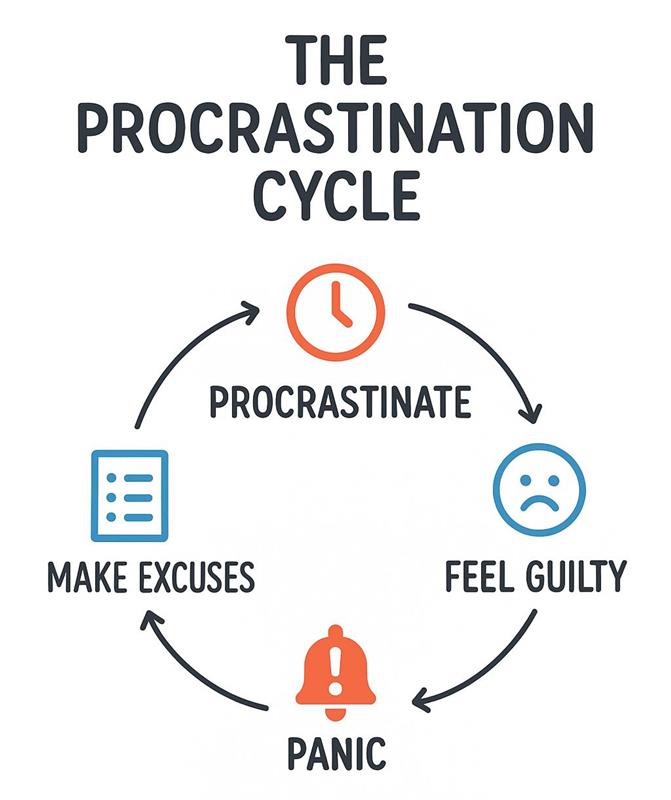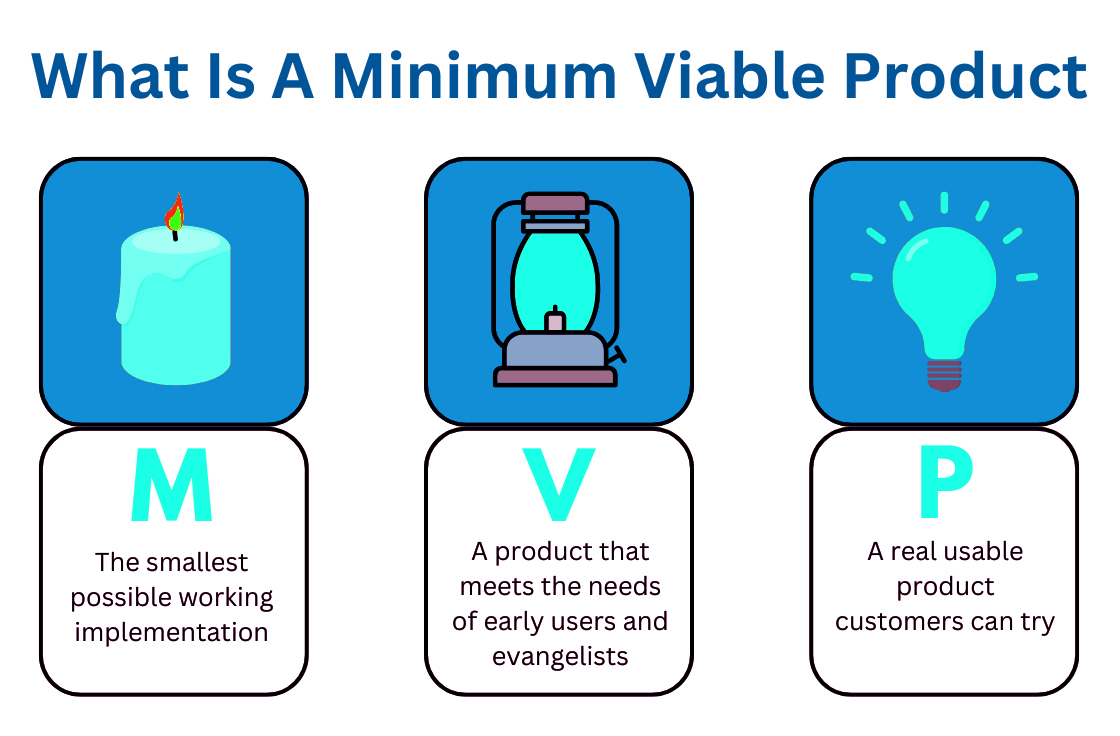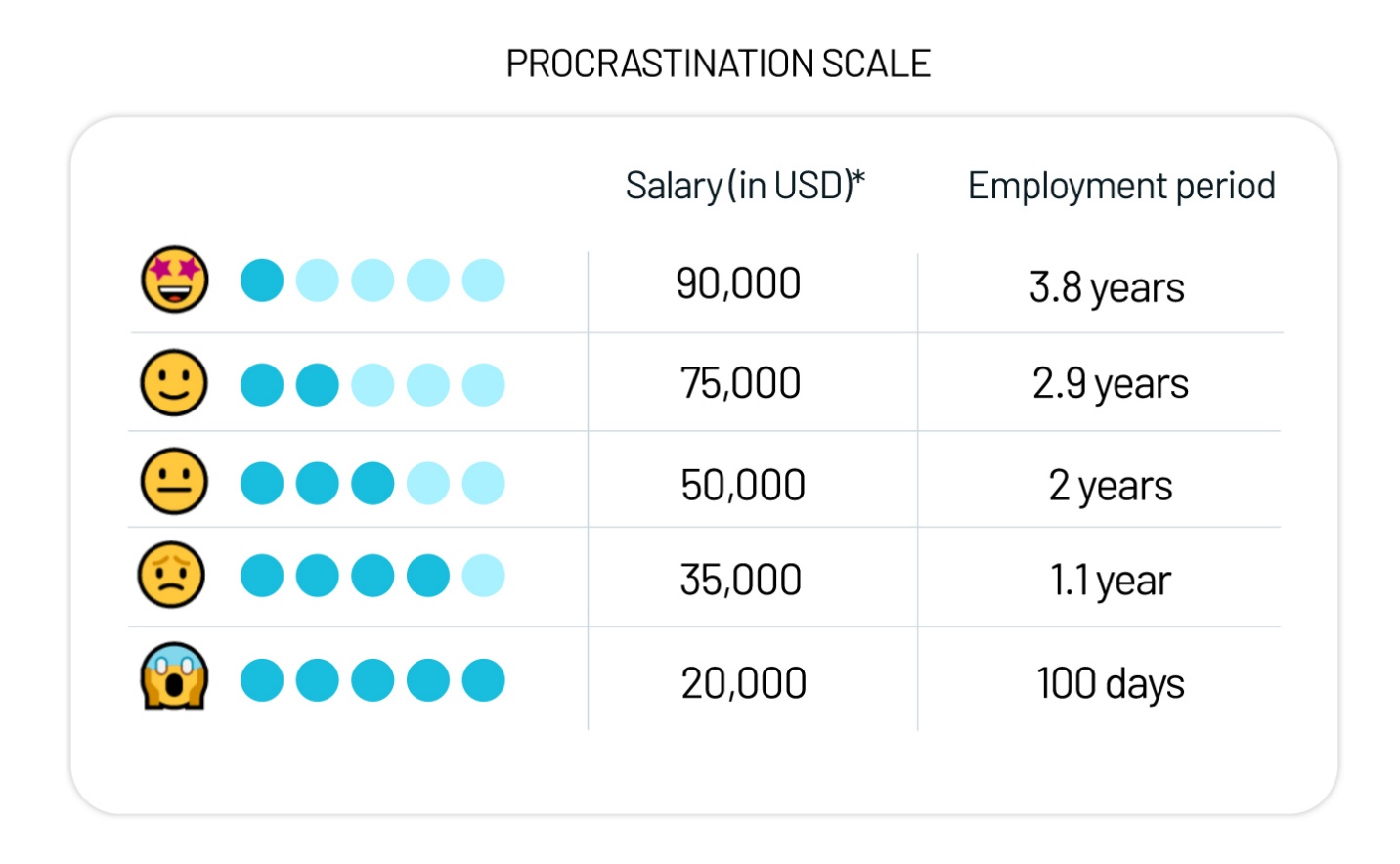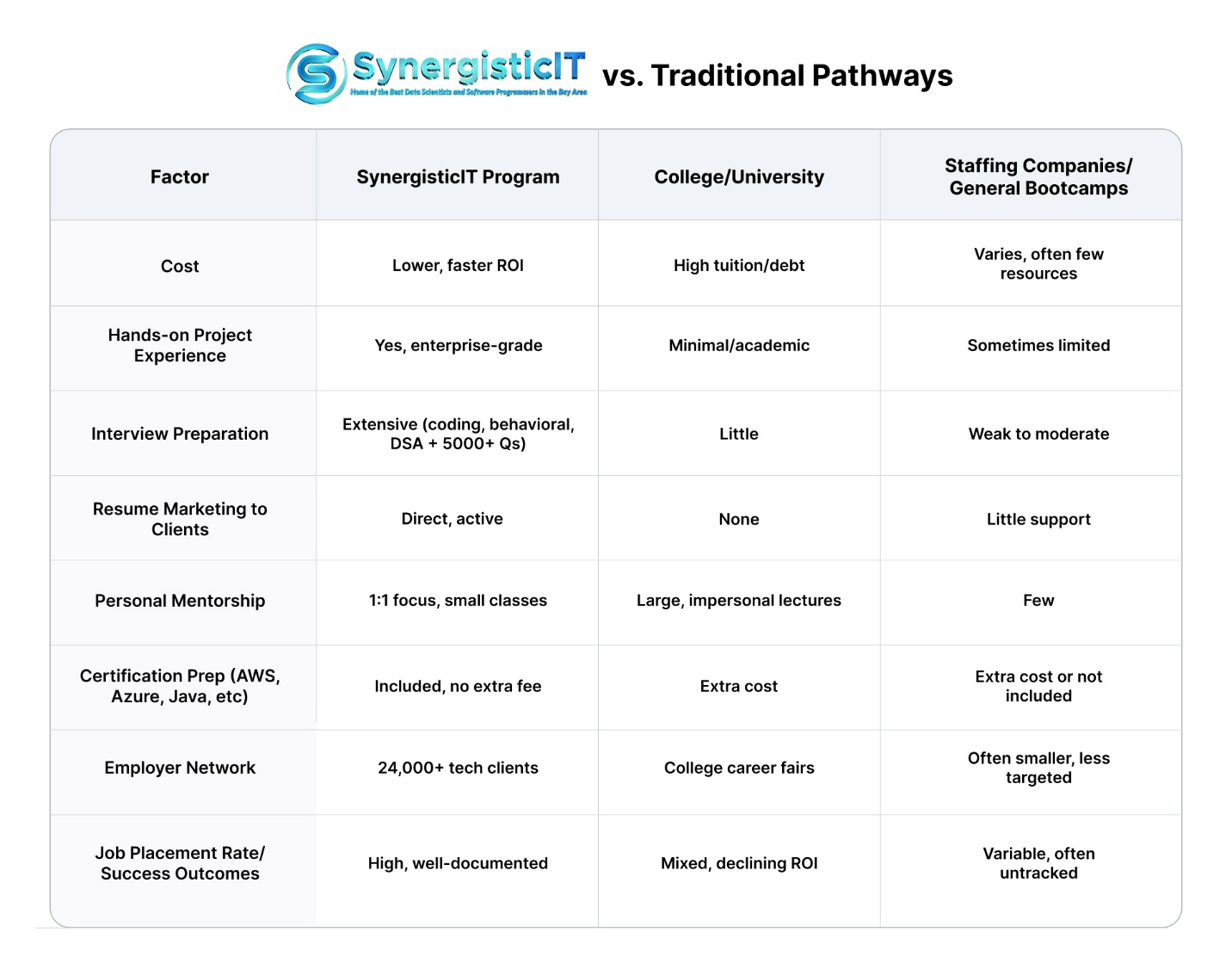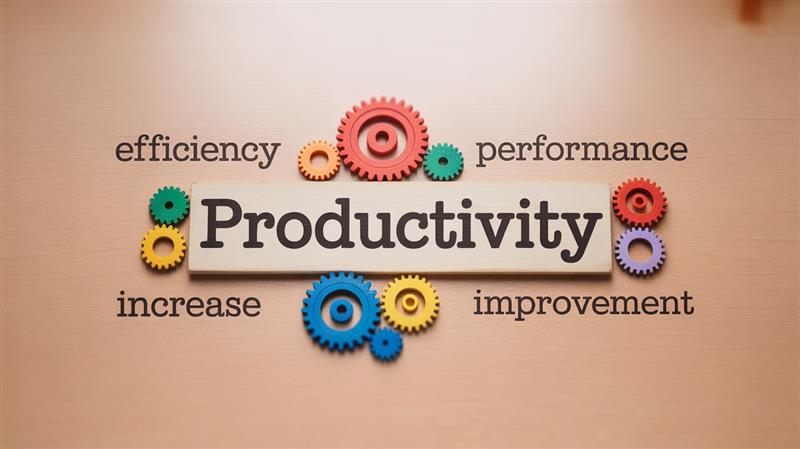
“I’ll start tomorrow.” For countless aspiring tech professionals, this simple phrase quietly sabotages dreams of a thriving career. In a sector defined by speed, relentless innovation, and evolving job requirements, delaying action does more harm than most realize. Find out Is Procrastination is Holding You Back from a Successful Tech Career? The world does not wait for the reluctant. Instead, extraordinary opportunities accrue to those who take initiative—even imperfect initiative—long before they feel “ready.”
This blog explores the psychology and consequences of procrastination in tech job seeking, the transformative power of acting early, how Minimum Viable Product (MVP) thinking accelerates real-world progress.
The Procrastination Mindset: Why “Tomorrow” Rarely Comes
Despite being a universal experience, procrastination is profoundly misunderstood. Most judge themselves as lazy for putting off important tasks—including learning new technologies or applying for jobs. But research reveals a deeper story: Procrastination is less about time management and more about emotion regulation.
Psychological Drivers of Procrastination
- Emotional Discomfort: Tasks like preparing for coding interviews, tackling tough projects, or learning new frameworks trigger uncomfortable emotions—fear of failure, perfectionism, self-doubt, or sheer overwhelm. Avoidance delivers short-term relief, even as it creates long-term consequences.
- Limbic System vs. Prefrontal Cortex: Neurobiology shows procrastination is a tension between the ancient limbic system (which seeks immediate comfort) and the rational prefrontal cortex (which focuses on goals). Under stress or anxiety, the limbic system wins, postponing action even when we “know better.”
- Digital Distractions as Amplifiers: Technology, meant to boost productivity, introduces a constant stream of interruptions—social media, notifications, emails, and online videos. Each provides an “easy out” from engaging with discomfort, making avoidance the path of least resistance.
In tech jobseeking, these psychological factors intertwine with practical realities. The fear of failing in technical assessments, the overwhelm of keeping up with trending stacks, or comparing oneself to seemingly “perfect” LinkedIn profiles create real emotional barriers. Procrastination in this context is less about laziness and more a self-soothing mechanism gone awry.
The Real Cost of Waiting: Procrastination’s Impact on Tech Careers
Lost Momentum and Self-Doubt
Every day spent delaying critical tasks—be it starting a bootcamp, applying to jobs, or even updating a resume—shrinks your momentum. Psychologists note a “downward spiral”: Delayed action fuels guilt, which erodes confidence, making further action seem even harder. In the competitive tech job market, where hundreds of applicants vie for each role and new technologies emerge monthly, waiting quickly places you at a disadvantage.
Missed Opportunities in a Fast-Moving Field
The tech sector moves faster than nearly any other. Programming languages, frameworks, and tools rise and fall with dizzying speed. Employers increasingly demand proficiency in not just core languages (like Java or Python), but also in cloud computing, AI, DevOps, and agile frameworks. Candidates who wait to start upskilling or entering the job market often find roles have evolved—or vanished—by the time they feel “ready.”
The Compounding Effect of Delay
A single day’s procrastination rarely ruins a career. But tech is subject to compounding: Each day not spent developing skills, networking, or preparing for interviews increases the gap between you and more proactive candidates. Over months, the skills gap can mean lower salaries, fewer job options, and missed entry to elite employers.
Consider the numbers: In 2025, data science job postings have increased by 36% annually, with machine learning engineers earning upwards of $156,000, and top roles exceeding $200,000. Java full-stack roles remain in high demand, with salaries for experienced developers surpassing $150,000. Each cycle of procrastination is not just a delayed paycheck—it’s a delayed career trajectory, innovation readiness, and financial security.
Overcoming Procrastination: Action as the Catalyst
Action Precedes Motivation
A core insight from leaders in tech productivity is that motivation most often follows action—not vice versa. Waiting to “feel motivated” is a recipe for endless waiting. Instead, small, purposeful actions prime your brain for further progress—the classic “action brings motivation” flywheel.
Example from Hypergrowth Tech
Rahul Pandey, a veteran of Meta and Pinterest, shares in IEEE Spectrum that he broke free from tech project procrastination by decomposing large, intimidating problems into “the smallest step possible”—even if that meant just adding a log statement in the code or setting up a blank repo. The reward was not solving the big bug immediately, but triggering the productive cycle of progress: “You’re productive → you feel good → you’re more productive”.
“Bite-Sized” Successes for Tech Learners
- Break Big Goals Down: Instead of “mastering JavaScript,” aim to complete one module of a course or one LeetCode problem per day.
- Start with Easy Wins: Even updating your LinkedIn profile or scheduling a single informational interview can catalyze further action.
- Reduce Activation Energy: Set up a low-friction environment—prepare your development tools in advance, or block social media during study hours.
The Zeigarnik effect, a psychological tendency for incomplete tasks to linger in our minds, means even starting a task “primes the pump.” Once you begin—even imperfectly—you’re more likely to keep going.
Real-Life Tech Successes: Action Over Delay
Amazon’s Relentless Experimentation
Amazon’s rise isn’t built on waiting for perfect products. Early launches of Prime or AWS were Minimum Viable Products, released quickly to gather feedback and iterate. By acting early, Amazon outpaced traditional retailers, set new benchmarks, and continuously evolved—rarely waiting for perfect readiness.
Walmart’s Digital Pivot
Walmart, facing existential threat from e-commerce rivals, chose action: the acquisition of Jet.com, aggressive rollout of in-store pickup, and supply chain modernization. Had Walmart waited for the “right moment,” it likely would have ceded market share and relevance.
Clorox’s Employee-Driven AI Adoption
Rather than top-down mandates, Clorox empowered teams to pilot new AI tools. Employees were encouraged to take initiative—launching small experiments that ultimately drove company-wide transformation. The result: a culture where taking action trumps endless committee planning.
MVP Thinking: Taking the First (Imperfect) Step
What Is MVP?
The Minimum Viable Product (MVP) is core to innovation culture—and to personal career development. The MVP philosophy, first coined by Frank Robinson and popularized by Eric Ries and Steve Blank, means releasing the simplest “working” thing possible that allows you to learn quickly with minimum risk or wasted effort.
Key Takeaway: MVP = The smallest amount of effort to learn.
| Principle | MVP in Business | MVP in Upskilling/Jobseeking |
| Minimum | Core feature, not perfection | Core skill—one project, not deep mastery |
| Viable | Useful for early feedback | Ready for feedback, entry-level application |
| Product | Shipped, functional unit | Portfolio, Github repo, project demo |
Applying MVP to your own career means starting upskilling early with a focus on iteration—not waiting for perfect conditions or knowledge!
MVP for Upskilling: How to Apply It
- Start Small: Take a short online module in Python, not a four-month course.
- Build Projects, Not Theories: Create a simple REST API, even if it’s unpolished.
- Seek Feedback Fast: Share your code on GitHub, request code reviews, or apply for entry-level positions for feedback—even before you “feel ready.”
Executing on MVP means you are learning from real market signals (recruiter responses, interview feedback) rather than theoretical models.
Real-World Learning and Project-Based Iteration
Hands-on projects—deployed even if minimal—demonstrate viability to employers far more than theoretical knowledge. This aligns perfectly with tech hiring trends: companies prioritize demonstrable problem-solving over abstract credentials.
The Tech Upskilling Imperative: The Dangers of Standing Still
Why Upskilling Isn’t “Optional” in Tech
The Future of Jobs Report (2025) warns that skill gaps are now the biggest risk to business transformation across industries. A massive 78% of surveyed executives report skills and talent availability as a current or looming crisis. In both software engineering and data roles, employers seek proof of recent, practical upskilling—not just degrees or legacy experience.
Economic Consequences of Delay
- Wage Erosion: Those who don’t upskill lose leverage—average U.S. data scientist salaries reach $126,000, while non-upskilled roles stagnate. Machine Learning engineers top $160,000–$180,000, sometimes more than $200,000 at top tech firms.
- Job Security: The velocity of change means previously “safe” mid-level careers now require active learning to remain relevant. As AI and cloud reshape roles, standing still is a recipe for redundancy rather than security.
Upskilling: The Engine for Retention, Promotion, and Resilience
Companies with robust upskilling programs report higher employee engagement, lower turnover, and better innovation pipelines. For individuals, upskilling is not just about “getting a new job”—it’s critical for keeping one and advancing over time.
The SynergisticIT Solution: Turning Early Action Into Real Tech Careers
Overview: More Than a Bootcamp
SynergisticIT’s job placement program isn’t a shortcut or a single online course. Since 2010, it has launched thousands of tech careers via a proven process: targeted upskilling, hands-on projects, interview and soft skills training, and direct marketing to tech clients.
Unlike most bootcamps, SynergisticIT integrates:
- Deep, practical upskilling in current stacks (Java, MERN, DevOps, Data Science, Cloud)
- Real-world project experience that mirrors employer demands
- Personal mentorship and small batch learning (7 candidates per class)
- Extensive interview and resume preparation (mock interviews, access to 5000+ real interview questions)
- Direct connection and marketing to a database of over 24,000 tech clients
The result: A step-wise process that builds job-winning confidence and skills, not a hope-for-the-best lottery.
SynergisticIT vs. Traditional Pathways
SynergisticIT delivers better ROI than most university degrees and outperforms piecemeal staffing or minimal bootcamps by focusing on what tech employers truly value: demonstrable, up-to-date skill, actual project experience, and polished professional presentation.
View full overview and outcomes
Process, Not Shortcut: Why “Starting Early” Matters
SynergisticIT’s founders are explicit: their program is a process, not a shortcut to instant success. Success is “guaranteed” only for those who commit to each stage, starting early and progressing step by step:
- Assessment and Personalized Learning Path: Candidates are evaluated, and skill gaps identified—then paired with targeted upskilling plan.
- Live, Interactive Classes: 5–7 hours per day, for several months, covering core technologies (Java Full Stack, Data Science, AWS, Python, etc.).
- Hands-on, Real-World Projects: Enterprise-grade projects, simulating actual business problems.
- Mock Interviews and Soft Skills: Intensive technical, behavioral, and communication skills development.
- Portfolio, Resume, and Certification Support: Building an online presence that matches industry demands, plus free preparation for certifications usually costing $2K–$5K elsewhere.
- Resume Marketing and Client Networking: Direct presentation to Fortune 500 and startup tech clients, leveraging a huge employer network.
- Ongoing Mentorship and Placement Support: Personalized guidance, troubleshooting, and support until job secured.
By starting early and trusting the process, jobseekers continuously build momentum—the opposite of the “I’ll wait until I’m ready” trap.
Success Stories and Metrics
- Thousands hired by top employers: Including Google, Apple, PayPal, Western Union, Visa, Walmart Labs, and more.
- High salary outcomes: Java Full Stack and Data Science/AI track grads average $120,000–$150,000, with many exceeding $180,000 in senior roles.
- OPT, H1-B, domestic placements: All visa and citizenship categories supported, including guidance for international students.
- Better ROI than college: Due to lower cost, faster results, and high placement rate, SynergisticIT outpaces traditional degrees as a gateway to lucrative tech careers.
Explore SynergisticIT Java Full Stack Placement Program and Data Science Placement Program, or overall job placement program for more.
Notable Endorsements: USA Today Feature
SynergisticIT’s success has been highlighted in USA Today’s profile and summarized by the company itself here:
“Hiring the right people is the key to any organization’s success and growth… Instead of recruiting from job boards, SynergisticIT leverages the power of technology to find individuals with the right basic technical skills and then takes them through skill enhancement programs to meet the tech demands of clients. Fresh graduates, when properly upskilled, certified and tested, can perform almost up to the level of experienced developers and programmers.”
Resources for Tech Jobseekers: Tools for Action
Interview Preparation: Don’t Wait—Start Practicing
- 3,000+ Technical Interview Questions and Answers: Comprehensive guides covering what real tech employers ask (coding, data structures, algorithms, behavioral). Essential prep for new grads and experienced jobseekers alike.
- Coding Interview Q&A (multiple parts): Step-by-step explanations for algorithms, data structures, and OOP concepts.
- Interview question videos and audio guides: Practice anytime, anywhere.
Preparing for interviews isn’t a final step; it should happen side-by-side with upskilling and project work. Early exposure to these questions reduces anxiety and accelerates confidence.
Event Videos and Candidate Outcomes
- Event highlights and successful outcomes videos: See SynergisticIT’s presence at Oracle Cloud World, Gartner Data and Analytics Summit, and more to understand industry trends and expectations.
- Success stories from recent candidates and candidate resource hub: Inspiration and practical advice from those who started—and succeeded.
Ongoing Learning: Blogs and Guidance
- SynergisticIT Job Hunting Techniques Blog: Regularly updated, packed with job search, interview, and upskilling tips for all experience levels and visa categories.
- Blog archive for industry trends and career advice.
Stay plugged into these resources to maintain your “action flywheel”—not just passively consuming, but continuously building your edge.
Digital Transformation Case Studies: The Power of Action in the Tech Industry
Beyond individual jobseekers, entire companies rise or fall by their willingness to act early and iterate fast. Digital transformation stories from Amazon, Walmart, Clorox, Microsoft, IKEA, and others underscore a universal rule: The market rewards those who start, adapt, and improve—never those who endlessly plan:
- Amazon: Pioneered one-click shopping, cloud computing (AWS), and Prime through relentless experimentation—beating slower, more cautious competitors.
- Walmart: Survived the e-commerce revolution with rapid digital integration (Jet.com, online-to-offline fulfillment) and AI-powered inventory management.
- Clorox: Saw employee-initiated AI projects, driving innovation from grassroots action rather than waiting for perfect top-down plans.
- IKEA, Armstrong, Capital One: Achieved efficiency and innovation by starting digital pilots early, learning from failures, improving through constant feedback.
These case studies highlight a pattern: early, imperfect action outperforms perfect, endless planning—whether building a career or a global business.
Mindset Shifts and Practical Strategies for Jobseekers
How to Break Free from “I’ll Start Tomorrow”
- Acknowledge the Real Barriers: Recognize that your delay might be about emotional discomfort—not actual lack of time or laziness.
- Use the MVP Mentality: Set small, immediate learning goals and don’t wait for full mastery before taking the next step.
- Create a Frictionless Environment: Minimize distractions, set focus hours, and use apps to limit digital interruptions.
- Join a Structured Program: Leverage processes like SynergisticIT, which sequence learning, build accountability, and provide direct feedback.
- Track Progress Publicly: Share accomplishments on LinkedIn or with a mentor as a light form of social pressure.
- Seek Feedback Early: Apply to jobs as you build skills—the feedback loop is essential to adjust your learning path.
Additional tactics from Professional Practice Academy and Psychology Today include breaking tasks into the smallest possible steps, tackling tough tasks first (“eat the frog”), using rewards, and keeping a “done list” for positive reinforcement.
Conclusion: The Future Belongs to the Proactive
In the tech world—where waiting equals becoming obsolete—your willingness to act, however imperfectly, is your greatest asset. Whether you’re a new graduate, a career switcher, or an experienced professional, ending the cycle of “I’ll start tomorrow” and beginning today builds not just skills and confidence, but results.
The market is hungry for upskilled, action-oriented candidates. Employers no longer settle for theoretical know-how; they seek project builders, quick learners, and those who adapt through iteration. SynergisticIT’s placement programs—validated by years of jobseeker outcomes, client endorsements, and national press—demonstrate that pairing MVP thinking with a proven process is the fastest, surest path to landing top-tier tech roles.
Ready to take the first step?
- Explore SynergisticIT’s Job Placement Program
- [Start your journey with the Java Full Stack Program or Data Science Job Placement Program]
- Browse real candidate stories and event videos for inspiration
Remember: Imperfect action today is worth more than perfect plans tomorrow. The only thing stopping you from a tech career is waiting to begin.
Useful SynergisticIT Links:
- SynergisticIT Job Placement Program
- Java Full Stack Job Placement Program
- Data Science Job Placement Program
- USA Today Feature: How SynergisticIT is Changing Tech Talent Sourcing
- 3000+ Interview Questions for Tech Jobseekers
- Event Videos
- Blogs for Jobseekers
Don’t just read about success. Take one step today. That’s how every tech career begins.



